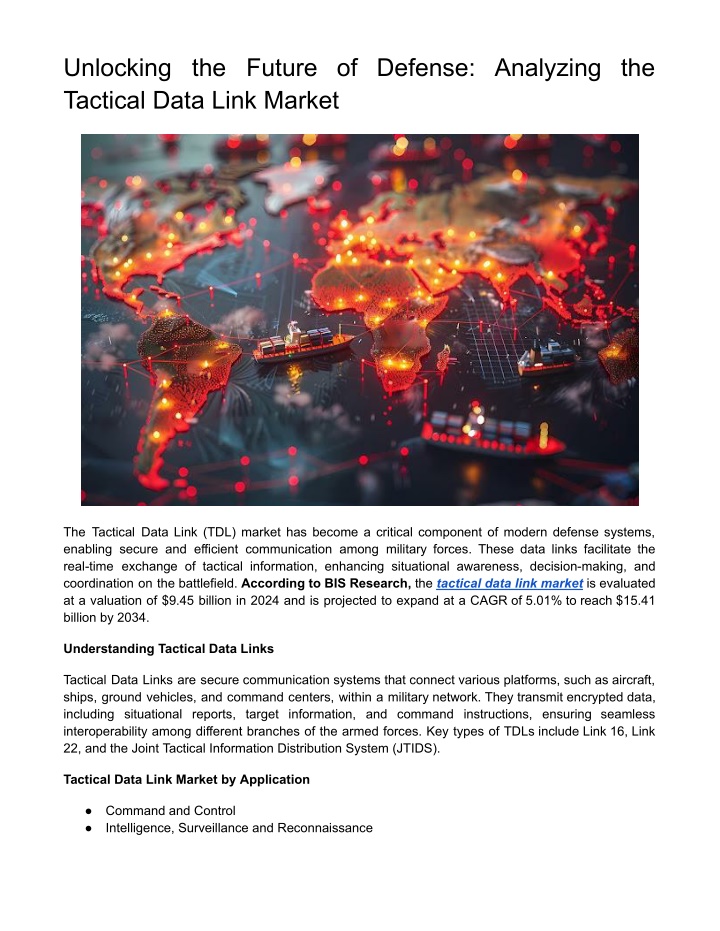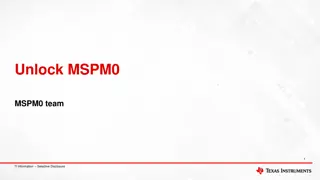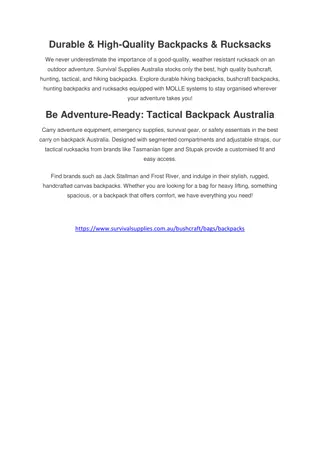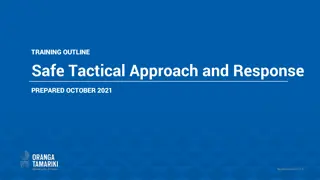
Unlocking the Future of Defense Analyzing the Tactical Data Link Market
The global tactical data link market is evaluated at a valuation of $9.45 billion in 2024 and is projected to expand at a CAGR of 5.01% to reach $15.41 billion by 2034.nnRead Report Overview: //bisresearch.com/industry-report/tactical-data-link
Download Presentation

Please find below an Image/Link to download the presentation.
The content on the website is provided AS IS for your information and personal use only. It may not be sold, licensed, or shared on other websites without obtaining consent from the author. If you encounter any issues during the download, it is possible that the publisher has removed the file from their server.
You are allowed to download the files provided on this website for personal or commercial use, subject to the condition that they are used lawfully. All files are the property of their respective owners.
The content on the website is provided AS IS for your information and personal use only. It may not be sold, licensed, or shared on other websites without obtaining consent from the author.
E N D
Presentation Transcript
Unlocking the Future of Defense: Analyzing the Tactical Data Link Market The Tactical Data Link (TDL) market has become a critical component of modern defense systems, enabling secure and efficient communication among military forces. These data links facilitate the real-time exchange of tactical information, enhancing situational awareness, decision-making, and coordination on the battlefield. According to BIS Research, the tactical data link market is evaluated at a valuation of $9.45 billion in 2024 and is projected to expand at a CAGR of 5.01% to reach $15.41 billion by 2034. Understanding Tactical Data Links Tactical Data Links are secure communication systems that connect various platforms, such as aircraft, ships, ground vehicles, and command centers, within a military network. They transmit encrypted data, including situational reports, target information, and command instructions, ensuring seamless interoperability among different branches of the armed forces. Key types of TDLs include Link 16, Link 22, and the Joint Tactical Information Distribution System (JTIDS). Tactical Data Link Market by Application Command and Control Intelligence, Surveillance and Reconnaissance
Electronic Warfare Radio Communications Tactical Data Link Market Trends 1. Increased Defense Spending: Global defense budgets are rising, driven by geopolitical tensions and the need for modernized military capabilities. This surge in spending is propelling the demand for advanced communication systems like TDLs. 2. Technological Advancements: Innovations enhanced encryption methods, improved bandwidth, and integration with advanced sensors and platforms, are driving the evolution of TDL systems. 3. Interoperability and Network-Centric Warfare: The shift towards network-centric warfare, which emphasizes interconnected and coordinated operations, is boosting the adoption of TDLs. These systems enable seamless information sharing across diverse platforms and forces. 4. Integration with Unmanned Systems: The growing use of unmanned aerial vehicles (UAVs) and unmanned ground vehicles (UGVs) necessitates reliable data links for command, control, and data exchange, further fueling the TDL market. in communication technologies, including Request A Free Detailed Sample on Tactical Data Link Market! Tactical Data Link Market Drivers Enhanced Situational Awareness: TDLs provide real-time data exchange, improving situational awareness and enabling quicker decision-making in combat scenarios. This advantage is a significant driver for their adoption. Force Multiplier Effect: By enabling coordinated and synchronized operations, TDLs act as a force multiplier, increasing the effectiveness of military assets and reducing operational risks. Modernization Programs: Many countries are investing in the modernization of their defense forces, including upgrading communication and data link systems to maintain a technological edge. Joint and Coalition Operations: The need for interoperability in joint and coalition military operations is a major driver for TDL adoption. These systems ensure that different national forces can communicate and operate cohesively. Future Prospects The Tactical Data Link market is poised for continued growth, driven by ongoing technological advancements and increasing defense investments. Key areas of focus for future development include: 1. Next-Generation Data Links: The development of next-generation TDLs with enhanced capabilities, such as higher data rates, improved security, and greater interoperability, will drive market growth. 2. Artificial Intelligence and Machine Learning: Integrating AI and ML into TDL systems can enhance data processing, predictive analytics, and decision-making, further improving their effectiveness.
3. Space-Based Communication: The utilization of satellite-based communication for TDLs can provide global coverage and connectivity, expanding their operational range and capabilities. 4. Civil-Military Integration: The integration of TDLs into civil defense and emergency response systems can create new opportunities for market expansion, enhancing public safety and disaster management. Download Our ToC: Click Here! Conclusion The Tactical Data Link market is a vital component of modern military operations, enabling secure, real-time communication and coordination. As defense forces worldwide continue to modernize and adapt to evolving threats, the demand for advanced TDL systems is expected to grow. Despite challenges such as cybersecurity risks and high costs, ongoing technological innovations and increased defense spending are likely to drive the market forward. The future of the TDL market holds promise, with advancements in AI, space-based communication, and next-generation technologies set to enhance its capabilities and applications.






















